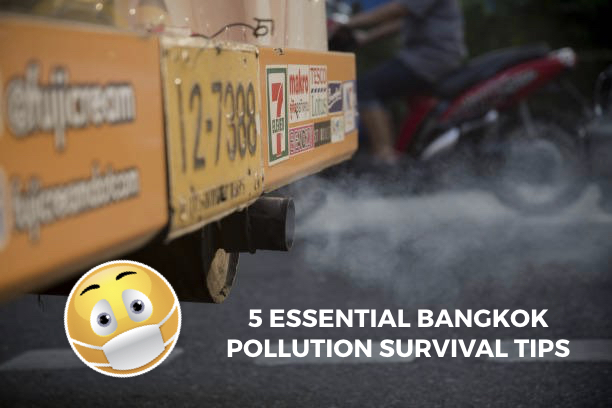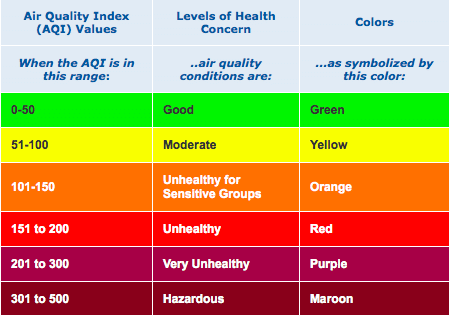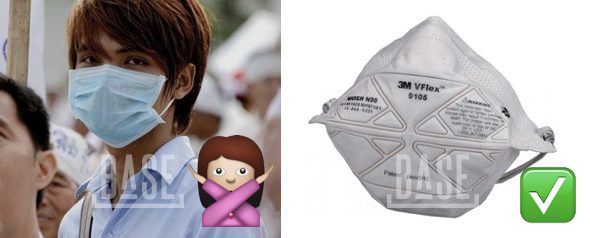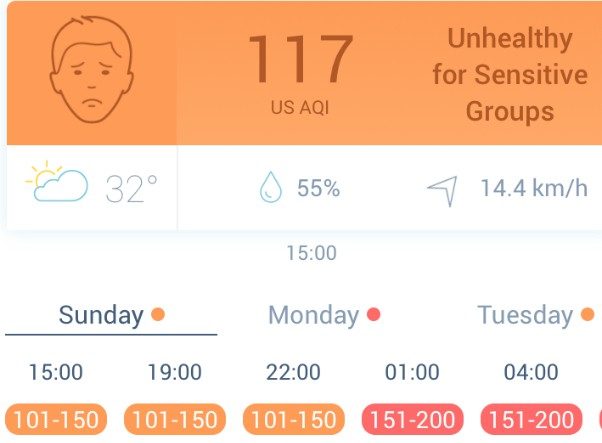Bangkok Pollution Survival Guide

By Jack Thomas
2020 Update: BASE has now installed industrial-grade Honeywell air purifiers across all locations so you can workout in a safe and fresh environment. Click here for more information on our training options at BASE.
——–
Right now there is one hot topic on everyone’s lips (and in their lungs) – Bangkok’s rising levels of air pollution.
At the time of writing Bangkok’s air pollution is 125 and it has been hovering between 100-200 recently. This has us in the ‘unhealthy for sensitive groups’ range on good days, and plain, straight-to-the-point ‘unhealthy’ on bad days.
QUICK SCIENCE: The measurement most commonly used for harmful air pollution refers to “PM (Particulate Matter) 2.5”, which are particles that are 2.5 microns in diameter or smaller. These are particularly dangerous because they can get lodged in the lungs and cause long-term health issues.
Here’s a summary to what the numbers mean for air quality:

On the bright side, it could be worse: Onitsha in Nigeria is 594 which is literally off the scale and reportedly the cockroaches are even wearing face masks.
Then again, Auckland in New Zealand was 6 today, so I’m already making my retirement plans.
We always knew that Bangkok’s air was never going to be as clean as the Amazonian rainforest but when it reaches these levels, measures should be taken to keep as safe and as healthy as possible.
Ideally you should move to Hawaii, but if that’s not an option here are BASE’s 5 tips to surviving Bangkok’s air pollution:
Wear effective protection
Paper masks, sleeves or bandanas do little to protect against the harmful micro-particles that cause the most damage so whilst you may feel ‘protected’, this isn’t really the case.
Use masks designed for industrial use that offer stronger protection such as N-95 or P-100 masks.
For your best Bangkok option we recommend these US-made face masks: the N-95 mask and this R-95 mask from Paleo Robbie.

Use apps to monitor pollution levels
Pollution levels will go down day to day, hour to hour, so keep track of what’s going on outside and make an informed decision about whether to exercise or go out.
We recommend the Air Visual App. This is what the app told us was happening in Bangkok today ⬇️

Get out of the city regularly
This one is simple – if the air’s no good in Bangkok, go somewhere where it is! Thailand has no shortage of beautiful, clean travel options so there are no excuses.
Scroll down to see BASE Coach Kate on a recent excursion to fill her lungs with clean, crisp air ⬇️
Exercise early or indoors
There is debate on the risks/rewards of exercising in a polluted environment, but it’s typically agreed that the benefits outweigh the risks. If you are to exercise outdoors then use your app to check on the pollution levels before you go.
As a general guide, stay away from heavily congested urban areas and exercise early in the morning or indoors where possible. If levels are very high then avoid outdoor exercise altogether.
Cleanliness!
This one isn’t heard as often but keep your home nice and clean to clear up potential pollutants. Sleep in a closed room with a regularly cleaned air conditioning unit and replace the filters often.
When you get home from a busy day of Bangkok pollution exposure, strip down and scrub yourself clean. We should aim to reduce exposure to all harmful substances like lead, carbon monoxide and particulate matter as soon as possible in an environment that we can more closely control – our home.
Conclusion
In an ideal world we wouldn’t have to take these measures.
Whilst we have every faith that the Thai government will resolve this in a timely and organized manner, the small steps outlined in this survival guide will help protect us in Bangkok until we see improvements.
We hope this helps! If you found this article useful please share it with anyone who may benefit, and if you’d like to receive more informative blog posts from BASE, please sign up below ⬇️
